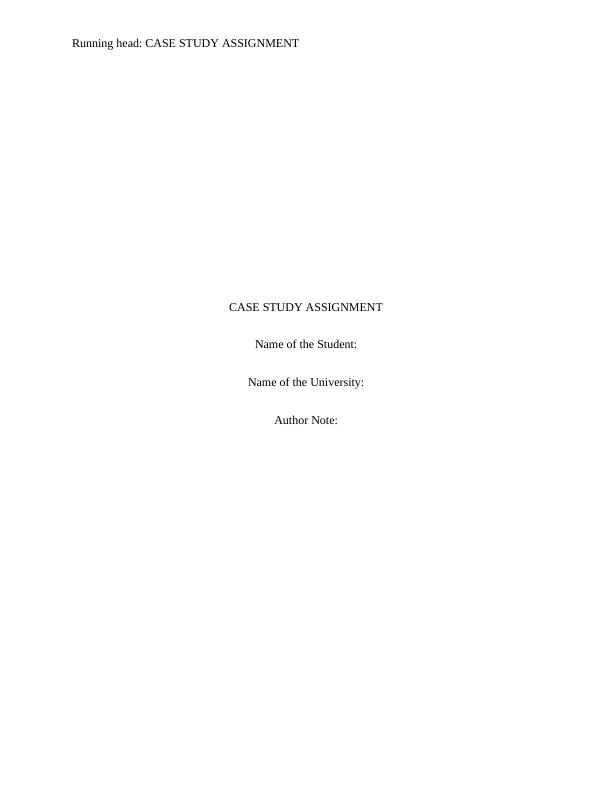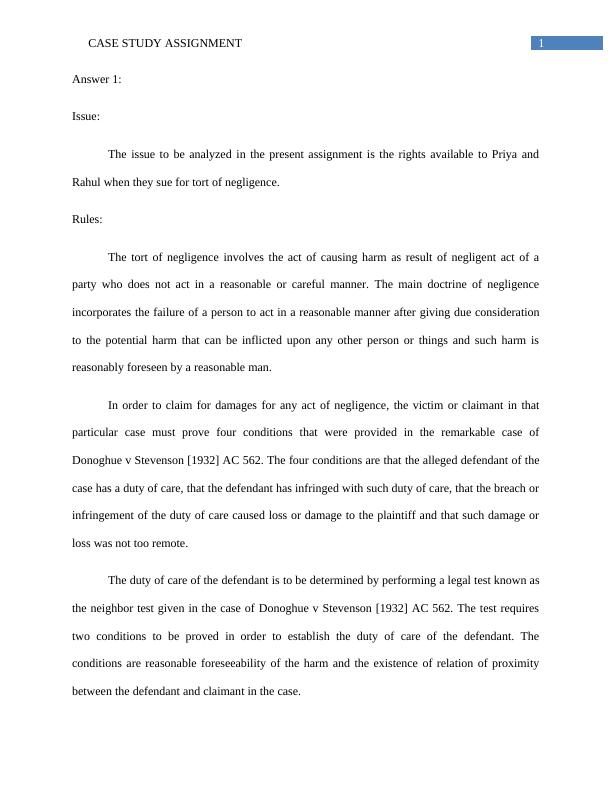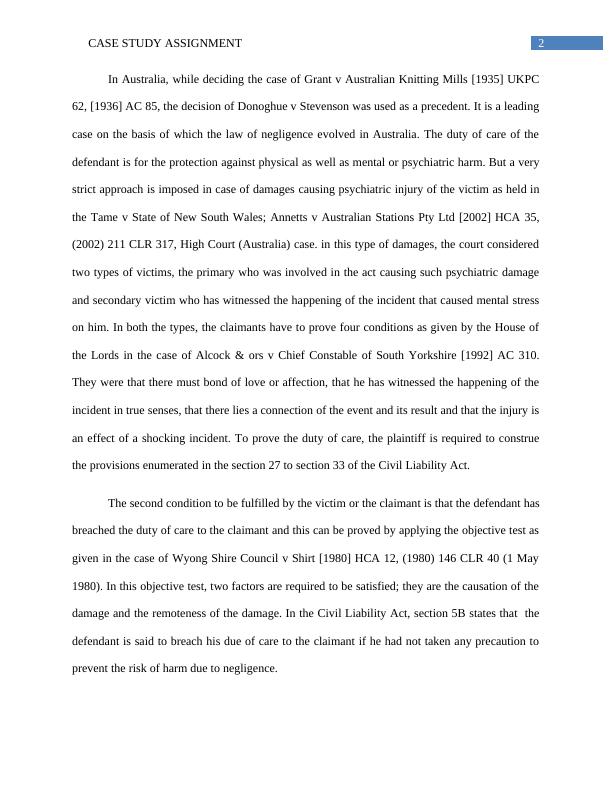Tort of Negligence and Australian Consumer Law: A Case Study
A research assignment in Commercial Law, worth 35% of the assessment, requiring independent research, reflection, and analysis on specific legal issues.
10 Pages2806 Words198 Views
Added on 2022-11-17
About This Document
This case study analyzes the rights available to Priya and Rahul when they sue for tort of negligence and whether they can avail the provisions enumerated in part 3-5 of the Australian Consumer Law (ACL). It also discusses the rules and application of the provisions of the ACL.
Tort of Negligence and Australian Consumer Law: A Case Study
A research assignment in Commercial Law, worth 35% of the assessment, requiring independent research, reflection, and analysis on specific legal issues.
Added on 2022-11-17
ShareRelated Documents
End of preview
Want to access all the pages? Upload your documents or become a member.
Case Study Assignment on Tort of Negligence and Australian Consumer Law
|11
|3022
|114
Case Study Analysis
|7
|1723
|270
Business Law Discussion 2022
|7
|1293
|24
Tort Law: Establishing Negligence and Defense of Volenti Non Fit Injuria
|9
|2482
|62
LW651 - The tort law assignment
|5
|1183
|136
Business Law Research Paper 2022
|5
|726
|36



